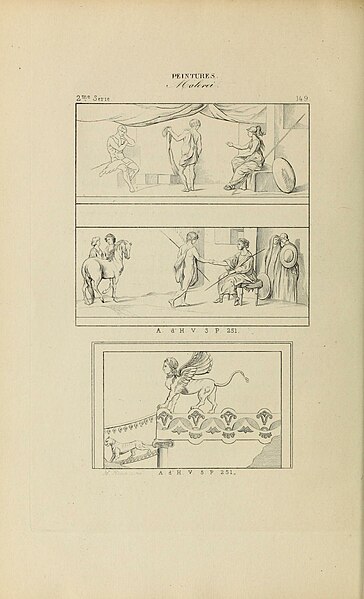File:Drawings of 1st century CE Fresco fragments from Pompeii or Herculaneum depicting mythological scenes and a sphinx.jpg
Jump to navigation
Jump to search

Size of this preview: 364 × 599 pixels. Other resolutions: 146 × 240 pixels | 291 × 480 pixels | 466 × 768 pixels | 1,209 × 1,990 pixels.
Original file (1,209 × 1,990 pixels, file size: 210 KB, MIME type: image/jpeg)
Categories:
- Herculanum et Pompéi, recueil général des peintures, bronzes, mosaïques, etc., découverts jusqu'à ce jour, et reproduits d'apreès Le antichita di Ercolano, Il Museo borbonico, et tous les ouvrages
- Pompeii by Henri Roux Ainé
- Ancient Roman frescos of Minerva
- Amphitryon in ancient Roman paintings
- Peleus
- Bellerophon
- Alcinous
- Sphinxes in paintings
